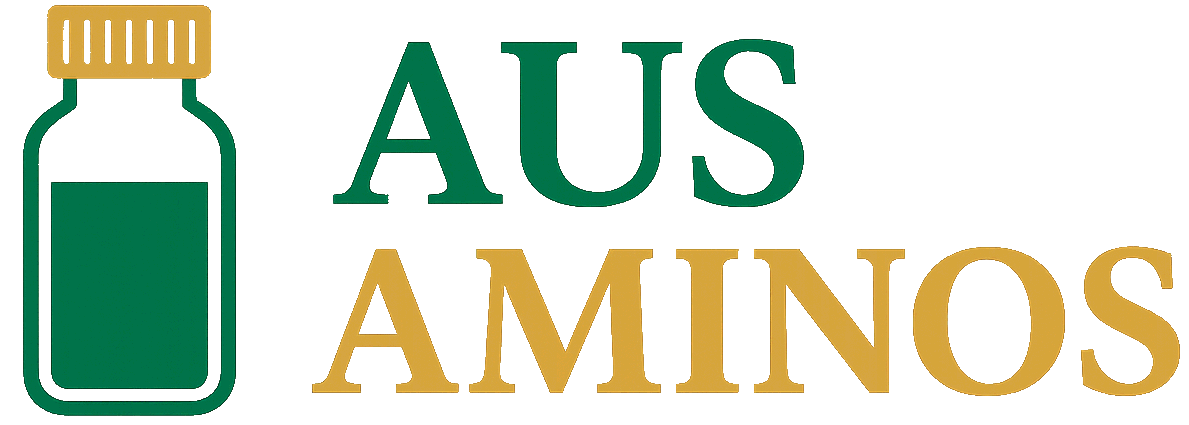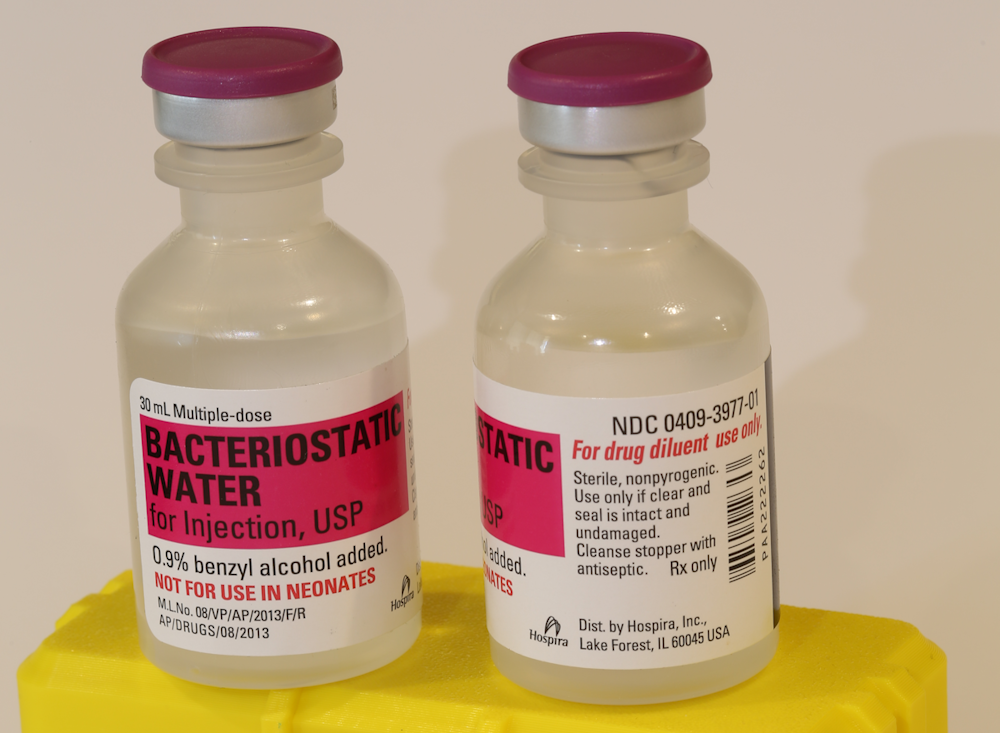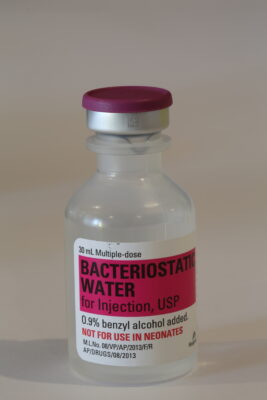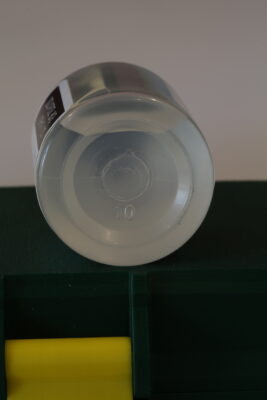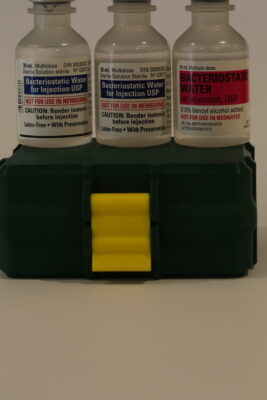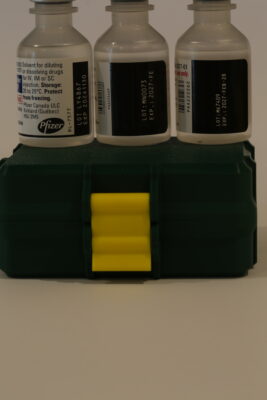Guide
How to Spot Fake Hospira BAC Water: Counterfeit Guide
Peptide researchers routinely depend on Hospira BAC water (30mL) for lyophilized powder reconstitution. Hospira is owned by Pfizer and follows strict standards for its bacteriostatic water; it is difficult and costly to test BAC water, and as such, reliance on the Hospira brand has been high. Unfortunately, an increasing number of counterfeit bottles have been sold to researchers over the last few years. This blog post serves as a reference for genuine Hospira bacteriostatic water and provides numerous examples of fakes to help you better detect counterfeit versions.
Click here to buy genuine Hospira BAC water from Aus Aminos
Genuine Examples
Hospira’s bottle design has remained almost completely consistent for well over a decade, and it’s one of the easiest ways to reliably determine whether or not the product is genuine. Here are some pictures of a 30mL bottle for reference. Click on them for full-sized versions.
Label design hasn’t been anywhere near as consistent: a few varieties have been included to highlight variations.
The Cap
In recent years, the cap color of the bottle has been relatively consistent: batches with an expiry from Feb 2027 and onward across both Pfizer and Hospira-branded BAC bottles share the same purple shade. Earlier versions of Pfizer Canada bottles were slightly lighter in color.
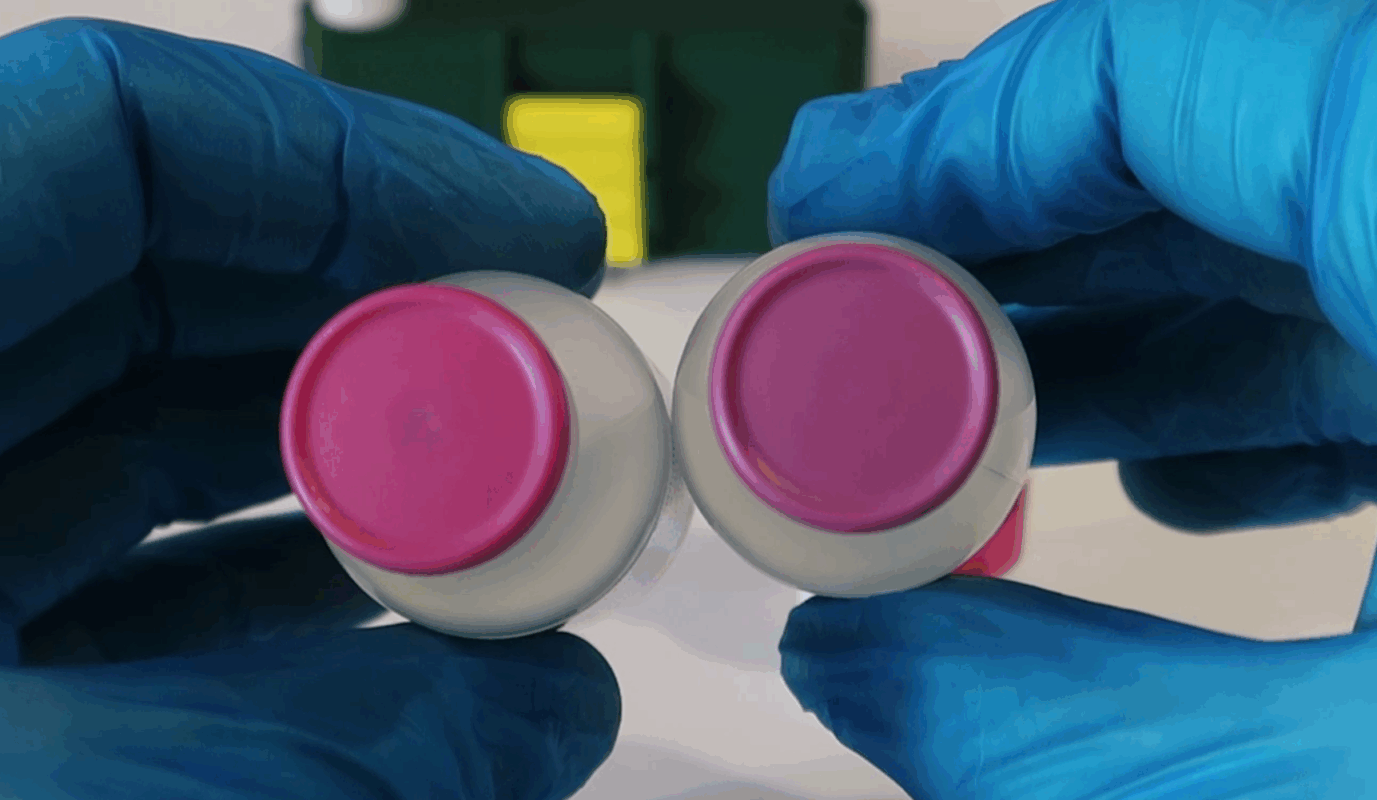
The center of the cap should have a slight doughnut impression, visible when adjusted to various angles of light.
Here is a fake example with a completely different cap style:
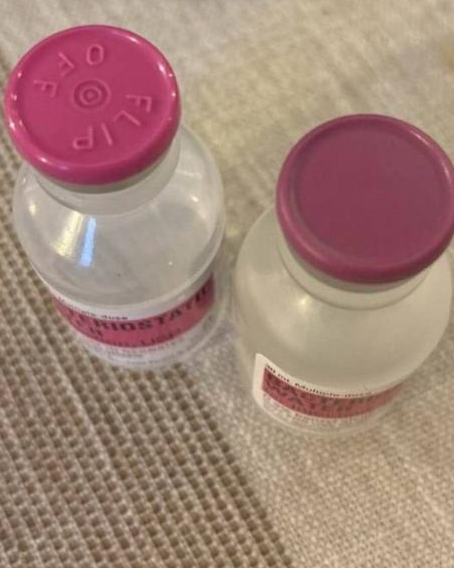
The Crimp
The metal crimp below the cap should be uniform in quality, thickness, and lustre. Pfizer/Hospira has made recent efforts to introduce data matrix etchings into their crimps: I have tested multiple bottles from multiple batches and multiple suppliers: none of the etchings are correct using standard decoding protocols (however, they’re quite close). The etching itself isn’t trivial to do, and I’m yet to see a counterfeit bottle of Hospira BAC that goes to the length of including this.
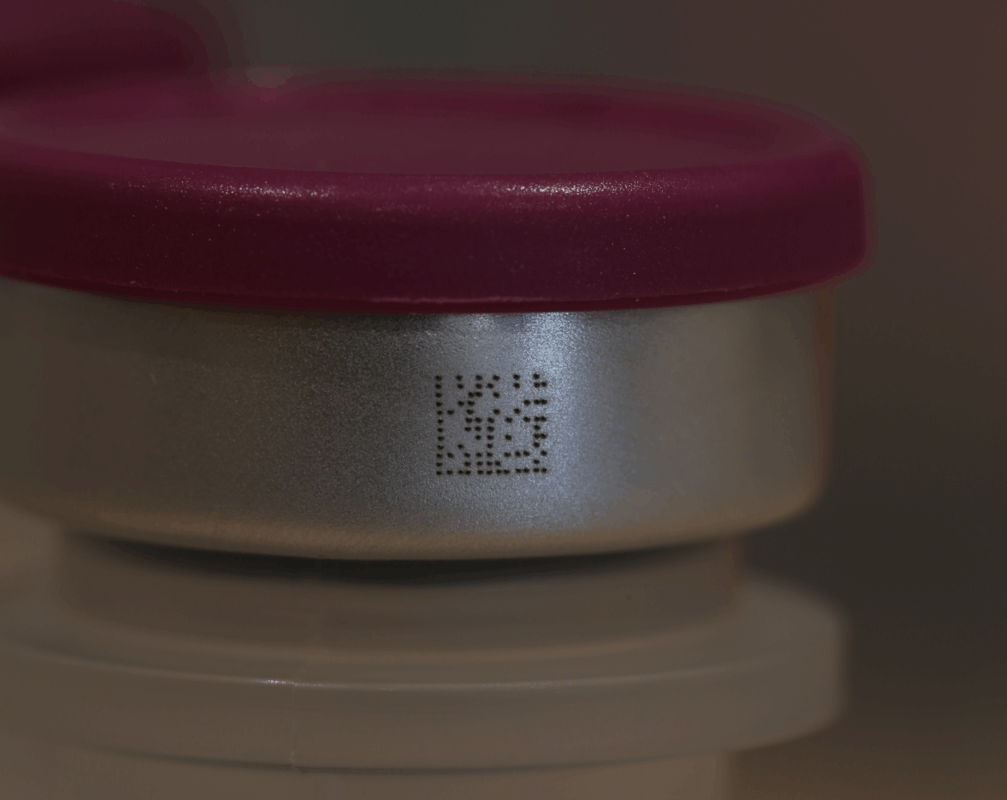
The etching should look similar to this, but with the dots in different positions. I am unsure why the etchings do not resolve correctly, but I will continue to investigate. It could be that standard decoding for a 12×12 data matrix cannot be used, and they’re using some other method instead. They’re not wildly incorrect, but incorrect enough. Hopefully, these etchings can be used as intended in the future to assist with counterfeit detection. Bottles with an expiry prior to February 2027 likely won’t have this etching.
Here is a fake example with an inconsistent crimp style (the underside’s curve undulates in width). The bottle also has a rubber stopper that’s visible through the plastic. Lastly, the height of the crimp is lower than it should be (cap to crimp ratio can also be used).
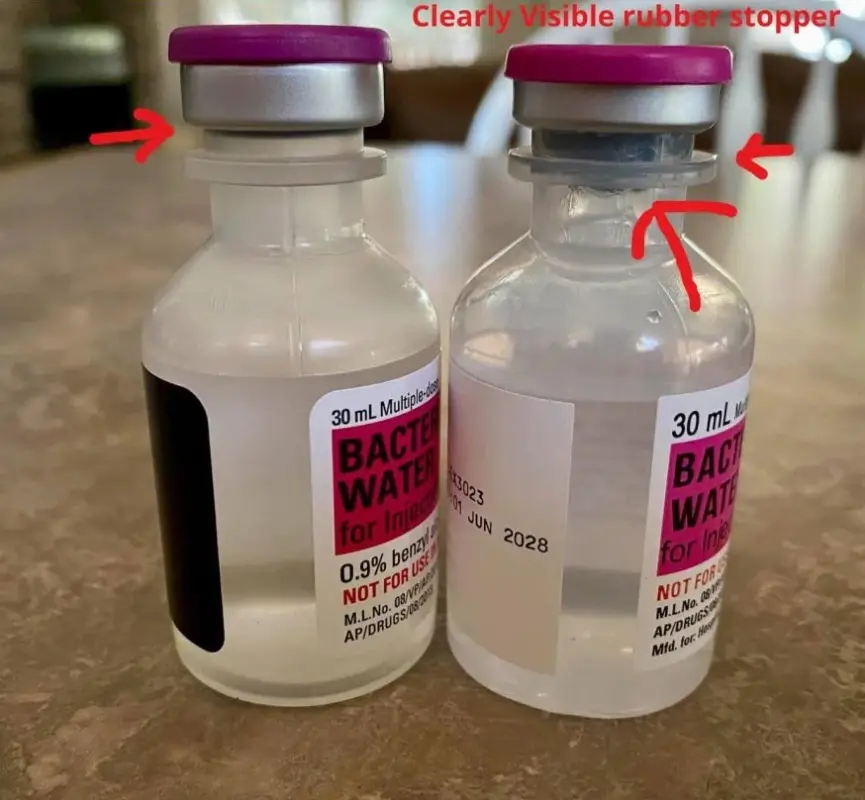
The Bottle Body
Below the silver crimp should be a secondary plastic ring. The entire bottle should resemble frosted glass but is in fact plastic. Two seams should run opposite one another down from the top of the bottle – there will even be slight elevations across the secondary plastic ring. Hospira BAC doesn’t appear to have any consistency with regard to the alignment of the etching, the seams, or the label. However, the underside of the bottle should have a raised number on it: this is centrally aligned with both seams equidistant from it. The bottom of the bottle should have a large depression.
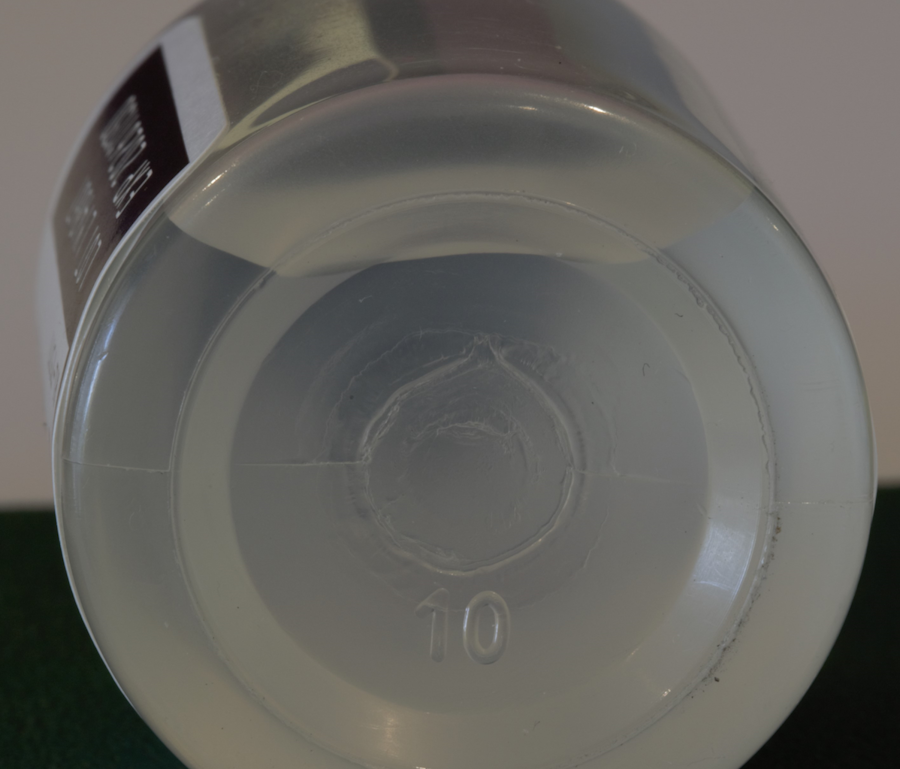
As for the label: there have been many iterations over the years, additionally, Pfizer has branded the bacteriostatic water both with the name Hospira and Pfizer, with large discrepancies between the styles. There are likely more styles and variants I haven’t seen, making it a less-than-ideal method of detecting counterfeit bottles. There are three variations shown at the top of this post as examples.
I cannot guarantee this as a method of detecting a counterfeit bottle, but there is congruency with regard to the dimensions and color of these two labels on Feb 2027 and onward expiries. Notably, the expiry should be on the black section and that black section should be 27mm in length – I believe it’s intentionally one-quarter of the circumference of the bottle, so hold the inner part at 12 O’clock and the edge should be at 3 o’clock.
Conclusion
This article is comprised of original research. If I have said something that’s incorrect, or you think I’ve missed something, please leave a comment or reach out to me via email. My aim is to protect the integrity of peptide research by ensuring fake and counterfeit bottles stay off the market.
